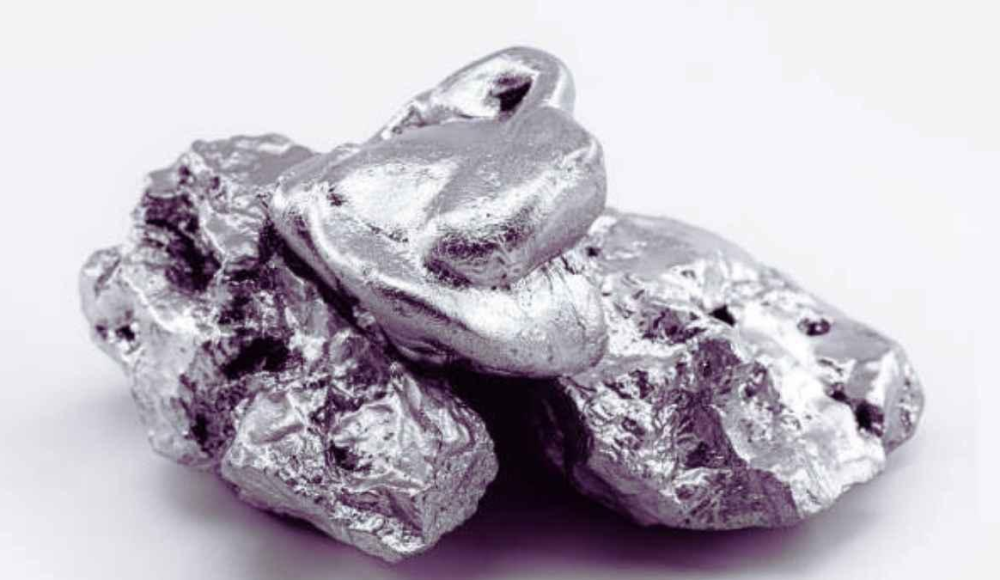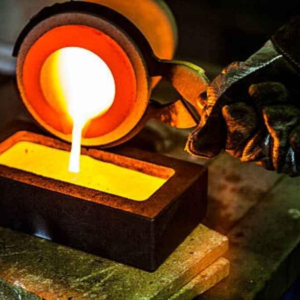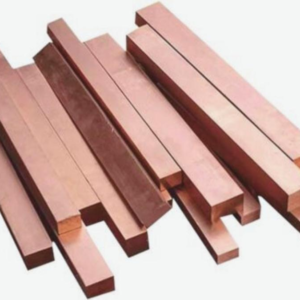¿Necesita datos claros sobre el punto de fusión del titanio?? El metal brillante es indispensable en todo el sector aeroespacial., automotor, e industrias manufactureras. La falta de conocimiento adecuado puede resultar en una mala selección de materiales y un procesamiento defectuoso de los mismos.. Este artículo trata sobre las propiedades de fusión del titanio..
¿A qué temperatura se funde el titanio??
El titanio tiene un punto de fusión de aproximadamente 1.668° Celsius o 3.034° Fahrenheit.. El alto punto de fusión del titanio no reduce significativamente su resistencia a altas temperaturas.. La temperatura de fusión juega un papel importante en la fundición., soldadura, y aleaciones para manipularlo y aplicarlo correctamente en muchos proyectos de ingeniería..
Información básica sobre el titanio
El titanio es una aleación de baja densidad., Alta relación resistencia-peso, así como excelente resistencia a la corrosión.. Aquí hay algunos puntos clave sobre el titanio.:
1. Propiedades químicas
- Símbolo: De
- Número atómico: 22
- Grupo: Metales de transición
- Densidad: Acerca de 4.54 g/cm³ que es menor que la densidad del acero.
2. Propiedades físicas
- Punto de fusion: Alrededor 1,668 °C (3,034 °F).
- Punto de ebullición: Acerca de 3 287 °C (5 949 °F).
- Color: Generalmente, es de color gris plateado y tiene una superficie brillante.
3. Resistencia y durabilidad
El titanio tiene una excelente relación resistencia-peso.. Por lo tanto, se utiliza cuando se necesitan productos resistentes y livianos.. Tiene la fuerza para resistir la tensión similar al acero pero es mucho más ligero..
4. Resistencia a la corrosión
La resistencia a la corrosión del titanio es maravillosa., especialmente en atmósferas marinas y ácidas.
5. Potencial de aleación
El titanio se puede combinar con otros metales, por ejemplo, aluminio y vanadio, para crear un material metálico combinado mejorado para ciertos usos..
6. Aplicaciones
Por sus propiedades únicas, El titanio se utiliza en varios campos., incluido:
- Aeroespacial: Piezas y motor de avión..
- Médico: Dispositivos médicos e implantes con énfasis en aparatos dentales..
- Industrial: Intercambiadores de calor y equipos de procesos industriales..
- Bienes de consumo: Accesorios deportivos y joyería deportiva..
Factores que afectan la temperatura de fusión del titanio
La temperatura de fusión del titanio se puede cambiar en diferentes condiciones.. Estos son los factores que afectan la temperatura de fusión del titanio.:
1. Pureza del titanio
Es una regla general ya que la presencia de impurezas tendrá un impacto bastante grande en el punto de fusión.. Una mayor pureza del titanio significa un punto de fusión más cercano al estándar.. Las impurezas afectan el M.P.. valor y propiedades.
2. Elementos de aleación
Cuando el titanio se mezcla con otros metales, la temperatura de fusión también puede verse afectada.. Por ejemplo, El aluminio puede afectar el punto de fusión del acero.. Puede subirlo o bajarlo, dependiendo de los otros elementos presentes.
3. Microestructura
Se sabe que el tamaño de grano y la fase en la microestructura del titanio afectan sus características de fusión.. Por ejemplo, cuanto mayor sea la distribución del tamaño de grano, menor será la temperatura de fusión efectiva durante el procesamiento.
4. Tasa de calentamiento
El calentamiento a alta velocidad puede causar una fusión parcial incluso cuando la masa total no ha alcanzado el punto de fusión normal., lo que plantea desafíos para el procesamiento.
5. Condiciones de presión
La temperatura de fusión puede depender de los cambios de presión.. A presiones más altas, Se puede observar que el punto de fusión del titanio sigue aumentando., que es un factor esencial en el uso de alta presión.
Razones por las que el punto de fusión del titanio es alto?
El punto de fusión del titanio es significativamente alto., aproximadamente 1,668 °C(3,034 °F). Varios factores contribuyen a esta característica., haciendo del titanio un material esencial en aplicaciones exigentes:
1. Fuertes enlaces metálicos
El titanio tiene fuertes enlaces metálicos debido a su estructura atómica.. Una gran cantidad de electrones de valencia proporciona una mayor capacidad para que los átomos interactúen entre sí, lo que significa una mayor estabilidad térmica y un punto de fusión más alto..
2. Estructura de embalaje cerrada hexagonal
La microestructura del titanio es hexagonal y compacta. (profesional sanitario) a temperatura ambiente. Esta disposición es eficaz para colocar el átomo denso en un área pequeña., y la cantidad de energía necesaria para separarlos aumenta, resultando en un alto punto de fusión.
3. Alta densidad de dislocaciones
Las dislocaciones abundan en la red cristalina del titanio. Mejora las propiedades mecánicas del material.. Estos desplazamientos requieren una gran cantidad de energía para superarlos., que a su vez, aumenta la temperatura de fusión.
4. Presencia de elementos de aleación
El titanio se utiliza a menudo en aleaciones., que también tienen altos puntos de fusión. La presencia de elementos como el aluminio y el vanadio mejora la temperatura de fusión general debido a sus propiedades de unión..
5. Conductividad térmica
La conductividad térmica del titanio es menor que la de la mayoría de los metales.. Por lo tanto, es un buen acumulador de calor. La propiedad prevista permite temperaturas más altas sin pasar fácilmente a un estado líquido..
Propiedades térmicas del titanio vs.. Aplicaciones
El titanio tiene una rica característica térmica., haciéndolo ideal para muchos usos en muchos sectores de la economía. Conocer estas propiedades ayuda a explicar por qué el titanio se usa ampliamente en condiciones difíciles..
1. Alto punto de fusión
- Propiedad: El elemento tiene un punto de fusión de aproximadamente 1668 °C o 3034 °F.
- Aplicaciones: Esta alta temperatura de procesamiento también permite la aplicación de sintéticos en estructuras aeroespaciales., Por ejemplo, motores y puntales, donde las altas temperaturas son típicas del medio ambiente.
2. Baja conductividad térmica
- Propiedad: El titanio tiene un coeficiente de conductividad térmica relativamente bajo en comparación con metales como el cobre y el aluminio..
- Aplicaciones: Esta propiedad hace que el titanio sea apropiado para su uso en intercambiadores de calor y piezas térmicas donde se supone que el calor no debe transferirse y las piezas delicadas necesitan protección..
3. Expansión térmica
- Propiedad: El titanio tiene un coeficiente de expansión térmica bastante bueno..
- Aplicaciones: La estabilidad del material bajo cambios de temperatura es deseable en aplicaciones aeroespaciales y automotrices donde las piezas deben mantener sus dimensiones bajo cargas elevadas..
4. Resistencia al calor
- Propiedad: El titanio tiene los beneficios adicionales de alta resistencia y, más importante, Resistencia al fallo a altas temperaturas..
- Aplicaciones: Esto lo hace adecuado para su empleo en aplicaciones como motores a reacción..
5. Resistencia a la oxidación
- Propiedad: El titanio también reacciona con el calor., formando una capa de óxido que no permite que se produzca más oxidación.
- Aplicaciones: La característica es vital en el procesamiento químico y las operaciones marinas, ya que el equipo a menudo está expuesto a condiciones corrosivas a altas temperaturas..
Punto de fusión del titanio vs.. Acero inoxidable
Para profundizar en las diferencias entre titanio y. acero, aquí presentamos una tabla comparativa:
| Propiedad | Titanio | Acero inoxidable |
| Punto de fusion | 1,668 °C (3,034 °F) | 1,370-1,540 °C (2,500-2,800 °F) |
| Densidad | 4.54 gramos/cm³ | 7.75-8.05 gramos/cm³ |
| Resistencia a la corrosión | Excelente | Bien, varía según el grado |
| Conductividad térmica | Bajo (acerca de 21.9 W/m·K) | Moderado (acerca de 15-25 W/m·K) |
| Relación fuerza-peso | Alto | Moderado |
| Aplicaciones | Aeroespacial, implantes medicos, ambientes marinos | Batería de cocina, construcción, automotor |
Conclusión
En conclusión, Como el titanio tiene un alto punto de fusión., es ideal para usar en áreas con altas temperaturas, como la industria aeroespacial y la medicina. Es ligero, excelente resistencia a la corrosión, y su alta relación resistencia-peso también lo hacen ideal para otras aplicaciones rigurosas. El conocimiento de estas propiedades es inevitable a la hora de elegir titanio en procesos de ingeniería y fabricación.. Si necesita más consejos sobre el titanio., Tapas de precisión Estaremos encantados de ayudarle a realizar la mejor selección de materiales.. Si tienes alguna otra consulta o necesitas más información no lo dudes, y no dude en contactarnos!




2 pensamientos sobre "Aquí encontrará todo sobre el punto de fusión del titanio”